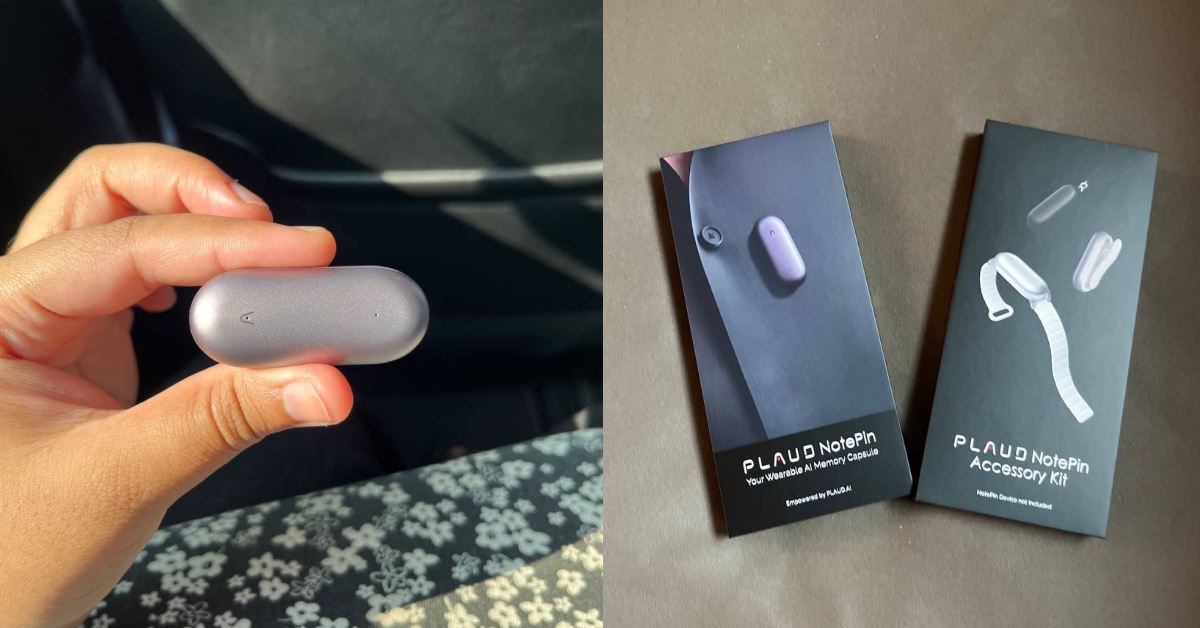Apple Reality Pro: everything we know about Apple’s VR headset
News is swirling about a possible Apple VR headset called Reality Pro, but what should you expect from Apple's foray into mixed reality? Here's what we know.
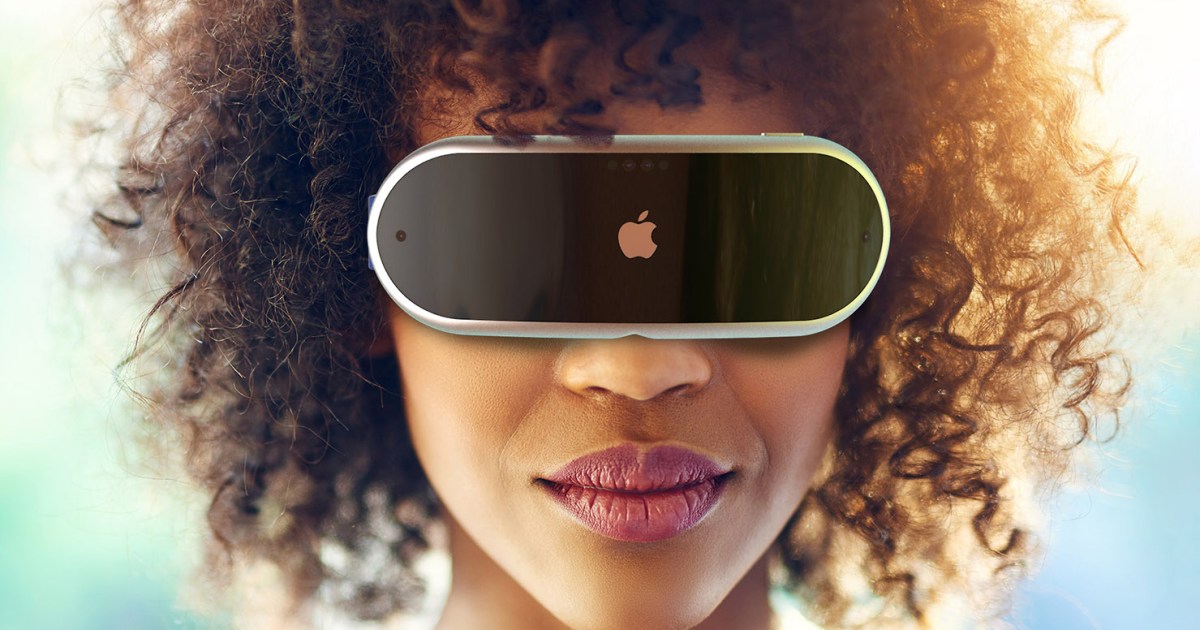
In recent months, rumors about Apple working on a top-secret headset project have reached a fever pitch. But at the same time, the chatter has become increasingly convoluted — Apple is reportedly planning to use mixed reality (MR) rather than solely augmented reality (AR) or VR, but how exactly that will work is unknown. What will the device look like? And what features will it have?
That is where this roundup comes in. We’ve combed through the rumors and reports to find all the latest key information, then combined it in one convenient location. Here is everything we know about Apple’s upcoming mixed-reality headset, including price, features, and more.
Price and release date
Apple analyst Ming-Chi Kuo originally suggested a January 2023 announcement date, with a shipping date coming in the second quarter of 2023. However, that January date has come and gone with no news. Elsewhere, Kuo has said that a development toolkit could make its way to interested parties two to four weeks after the reveal event.
A recent report from The Information cited major manufacturing difficulties due to tight tolerances and limited room within the curved internal space for the hand assembly required. Apparently, the device is so slim that the circuit board had to be curved to fit inside. Apple’s initial production efforts reportedly suffered a defect rate as high as 80%.
In late 2022 and early 2023, a consensus began to form around the idea that Apple’s headset will launch at a special event in spring 2023. Only a handful of devices are expected at the show, but the mixed reality headset was strongly rumored to be the headline attraction.
However, the idea was thrown into disarray when Bloomberg reporter Mark Gurman claimed his sources had told him that Apple had pushed back the release date from April to June due to various hardware and software issues. If true, it’s just the latest in a long line of delays to have apparently beset the device.
New story: Apple has postponed the planned introduction of its mixed-reality headset from around April to June at the annual WWDC conference, the latest setback for Apple’s next major device. https://t.co/B9Z822eiWV
— Mark Gurman (@markgurman) February 15, 2023
The June date makes sense, though, because it would allow Apple to launch the device at its Worldwide Developers Conference (WWDC). That would give the company the perfect stage to get developers up to speed on the new device, which is allegedly going to run on a new operating system that developers will need to get used to.
Whatever the actual launch date, we’re talking about the first headset launched by Apple. The company is also rumored to be working on multiple devices, including a more affordable version that will follow the initial product. After that, Apple could launch a set of AR glasses that look more innocuous than a full-on headset. There’s no official release date for those yet, though, and they could be a long way from launch, though Kuo has suggested the second-generation headset could enter mass production in 2025, with Apple expecting to sell 10 times as many units as the first-generation model.
As for the price, Kuo initially suggested a much lower price of $1,000. This puts the headset in consumer territory and what we would expect from Apple: expensive, but still considered mainstream and consumer-focused. However, in August 2022, Kuo then upped that prediction to $2,000, and Mark Gurman cited a similar figure.
That might have been an underestimate, though. The Information has offered details claiming the headset will cost $3,000. That would put it in the company of Microsoft’s $3,500 HoloLens 2, but with a price that high, it would likely be restricted to use by developers and professionals. That seems a little out of character for Apple. However, a January 2022 report from Display Supply Chain Consultants (DSCC) also claimed the price tag would be “several thousand dollars,” and later reporting from Gurman backed up that $3,000 price. Leakers and reporters seem to have settled on that amount, making it an expensive first effort from Apple.
Interestingly, a report from Gurman in January 2023 stated that, despite the high price, Apple would actually lose money on each headset. That’s an indication of how much high-tech wizardry is packed into the device, and also suggests Apple is banking on its first-generation headset getting people in the door and paving the way for later products. With a $3,000 asking price, though, it could be a hard sell.
What’s in a name?
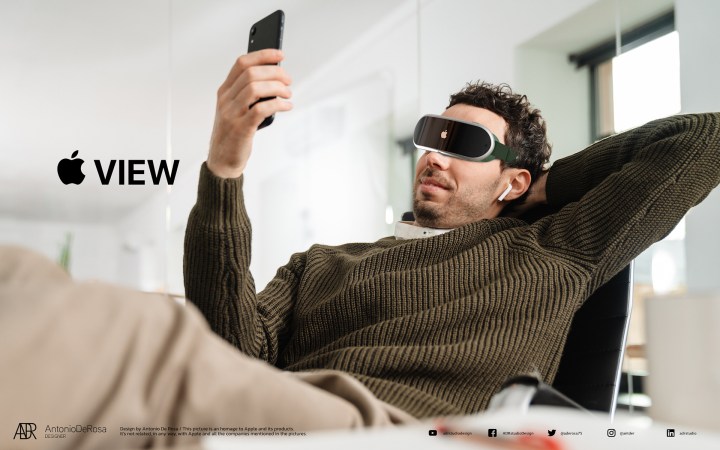 Apple VR Headset Concept Antonio De Rosa
Apple VR Headset Concept Antonio De RosaEver since the first Apple headset rumors started to leak on the internet, people have been speculating about what the device might be called. Some early contenders have come and gone, but an answer appears to be getting closer.
The first widely promoted name was Apple Glass. This was mooted by leaker Jon Prosser in a YouTube video from mid-2020 after he claimed to have seen a prototype of the device. However, this name was shot down by Gurman, who expressed his doubt that Apple would name a product after the flop that was Google Glass. Fair point.
Gurman himself proposed a number of options Apple might go with, including Apple Vision, Apple Reality, Apple Sight, and Apple Lens.
In late August 2022, Apple filed trademarks for the names “Reality Pro,” “Reality One,” and “Reality Processor.” Gurman believes Reality Pro is the name Apple will use for its first headset, and that name indicates it will be a high-end device, perhaps one to rival Meta’s upcoming Quest Pro.
After that, Gurman believes a more affordable headset will launch without a few of the headline features of the Reality Pro. That pared-back device might take the name Reality One. Apple has previously used the “One” name, such as with the Apple One subscription service.
We don’t yet have a name for the AR glasses Apple is supposedly working on, but we’re sure a name will leak out soon enough. Perhaps it already has — Apple Lens seems like a strong contender to us.
A wraparound design and tons of cameras
What can you expect Apple’s mixed-reality headset to look like? Well, seeing as it combines AR and VR, chances are it will be a full wraparound set to keep you immersed while using its virtual reality features. Anything that lets you see your surroundings — like Microsoft’s HoloLens 2 or the Magic Leap 1 — would take you out of the virtual world you are experiencing. Rumors also suggest Apple’s device will be totally wireless to give you the freedom to move without being yanked back by cables — another immersion-breaker.
Then there is the augmented reality side. To make this happen, the headset is going to require cameras to capture the outside world and feed it back to you. According to a report from The Information in early 2021, there will be up to a dozen cameras and lidar sensors mounted on the device, the latter of which Apple has already incorporated into devices like the iPhone 12 Pro and iPad Pro to help with augmented reality processing. However, a newer report from The Information in May 2022 asserted that there would actually be 14 cameras on the device — something that the outlet claimed again in an October 2022 report, which added that the headset would have two downward-facing cameras to record a user’s legs.
The May report from The Information also contained an interesting tidbit on the headset’s body: it could use straps that look awfully like those on the Apple Watch Sport Band. It is not the first time we have seen one Apple device take design cues from another — the AirPods Max headphones borrow the HomePod Mini’s fabric mesh and the Apple Watch’s Digital Crown, for example. In October 2022, The Information claimed the headset would resemble “a pair of ski goggles” and be made primarily from “mesh fabrics, aluminum, and glass.” The report added that the headset conceals its cameras noticeably better than the Meta Quest Pro.
Kuo, however, contends there will be 15 cameras — eight for AR, one for environmental detection, and six for “innovative biometrics.” Kuo backed this up with a further report in April that reiterated the claim of 15 cameras. It is possible both versions exist as prototypes, with Apple to decide which to settle on in the future. Whichever claim ends up being correct, it is evident Apple is taking the camera situation on its headset seriously.
And in a move typical for Apple, privacy could be a key consideration for its camera array. According to Patently Apple, the headset could come with a built-in light that turns on to alert bystanders that the headset is recording.
Light as a feather
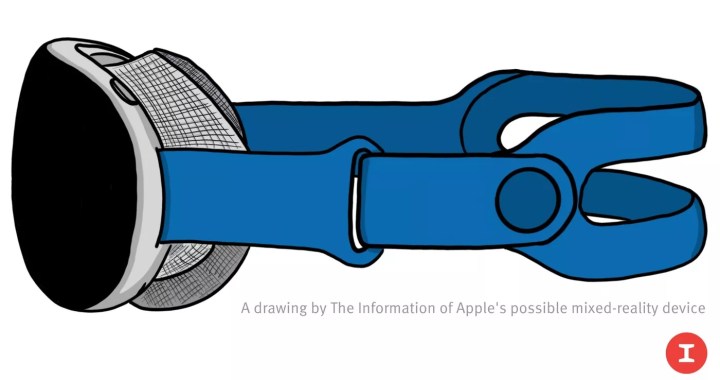
What about the actual body of the device? This is an interesting one, as it could be a real differentiator — and advantage — for Apple. A report from Kuo in March 2021 claimed the entire headset could weigh as little as 150 grams (0.33 pounds), which is about half the weight of many rival devices. The $1,000 Valve Index VR headset would weigh more than five times what Apple’s headset weighs if Kuo is correct, and Apple’s device would also weigh significantly less than the 722g Meta Quest Pro. Aiding that low-bulk goal would be the use of lightweight fabric instead of heavy plastic in the frame.
The Information claimed in May 2022 that Apple’s former design guru Jony Ive has been brought in as a consultant for the headset. Given Ive’s penchant for incredibly thin and light devices, we wouldn’t be surprised if the rumors that the headset will be super-lightweight prove to be correct.
When Gurman published a detailed exposé of the Reality Pro in January 2023, he claimed the device would be made from aluminum, glass, and cushions, and will be “reminiscent of Apple’s $550 AirPods Max headphones.” Gurman also stated that the device’s battery would be separate from the headset itself, with users tethering it to the Reality Pro and stashing it in a pocket. That will apparently help bring down the weight of the headset, and could also offset any concerns of having a warm battery lodged onto your head.
A 4K feast for your eyes

It is not just the exterior of Apple’s headset that sounds promising, as the interior could come with some eye-opening features, too — quite literally in the case of the display resolution. Reporter Gurman has claimed the device’s resolution will be 4K per eye, giving a huge level of detail. For comparison, the HTC Vive Cosmos Elite comes with a 1440 x 1700 resolution per eye. What’s more, according to The Elec, Apple has increased its pixels-per-inch goal for each eyepiece, up from 2,800 pixels per inch to a huge 3,500 ppi. That could bring unrivaled clarity to the headset’s creations.
A January 2022 report from industry analysts at DSCC backs up that idea, claiming that the front-facing lenses could have a 4000 x 4000 resolution. The report adds other enticing details, including that the front panels will be micro-LED displays, while Apple will add a third panel for peripheral vision. This will be an AMOLED display and run at a lower resolution than the micro-LED screens, which could help create an immersive, all-encompassing experience that keeps your peripheral vision slightly blurred to help you focus on what’s ahead of you.
Apple is said to be gunning for high-quality visuals in other ways, with Kuo alleging that the headset might come with iris recognition based on the tech his sources tell him is in the device (such as the cameras used for “innovative biometrics” mentioned earlier). Iris recognition could be used to authenticate you for Apple Pay, says Kuo, or to unlock your accounts, enabling you to perform these tasks without having to take off the headset to enter a password on your iPhone.
I didn’t cover this in my original story about the Apple Reality Pro headset trademarks, but Apple has registered for an additional name: Optica. I’d imagine this is some feature surrounding the device’s interchangeable prescription optics system. https://t.co/ZUcSwjFNXa
— Mark Gurman (@markgurman) September 4, 2022
Kuo has also suggested in a tweet that the headset might smoothly switch between AR and VR modes, creating an “innovative experience” that could become “one of [the] key selling points of Apple’s headset.” That’s something Gurman agrees with, as he claims the Reality Pro will use a toggle like the Apple Watch’s Digital Crown to switch between AR and VR. That could give it a distinct advantage over rival headsets that are limited to either AR or VR or cannot switch as seamlessly between them.
We mentioned earlier how Apple has been trademarking various names relating to its headset. One more name claimed by the company is “Optica,” which Gurman speculates could refer to “some feature surrounding the device’s interchangeable prescription optics system.” A more recent report from Gurman claims Apple will offer custom prescription lenses that will fit into the device’s enclosure. Since we doubt a pair of glasses could fit under the headset, that’s great news for anyone who uses eyewear daily.
One thing we have not seen much news on is the refresh rate and field of view that will be used in the headset’s displays. The refresh rate will need to be high enough that lag and motion sickness are kept to an absolute minimum, and rival headsets typically aim for 90Hz or higher. We will have to wait and see what Apple opts for here.
While the visuals could be stunning, Gurman believes you’ll need to wear a pair of AirPods if you want to enjoy spatial audio. Reality Pro will have its own speakers, he says, but they will apparently be limited in their abilities.
Powered by an Apple Silicon chip
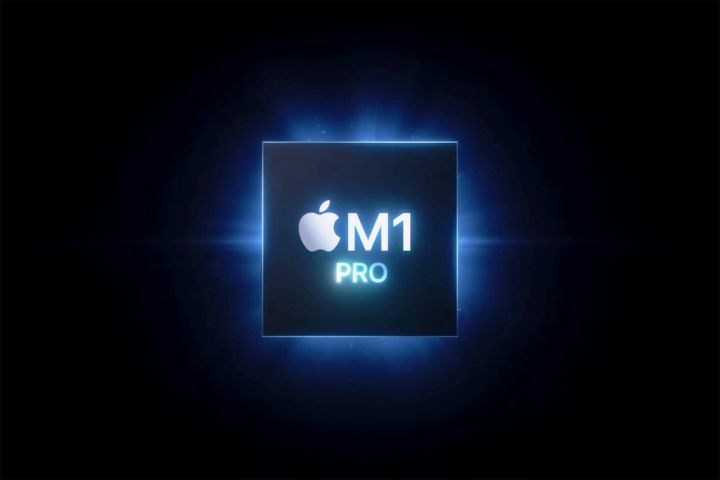
Powering all this tech would be a pair of custom-designed Apple Silicon chips. The main CPU will be one of Apple’s “most advanced and powerful” processors, according to Gurman, who believes this could be an M2 chip with 16GB of RAM. Apple’s ARM-based chip architecture is incredibly efficient — so much so that the M1 MacBook Air does not even need a fan — which makes it ideal for a compact device like a mixed-reality headset, where keeping things cool is essential (for both you and the chip). However, while Gurman previously claimed the headset itself might not need a fan, he changed tack in January 2023, saying it would likely come equipped with one.
According to Kuo, the dual-chip setup would consist of one made with a 4-nanometer process and another on a 5-nanometer process. Kuo says the former would offer the main computing power, while the latter would manage the device’s sensors. The combined power output would require one of Apple’s 96-watt adapters, Kuo believes — the same adapter as the one that juices up the MacBook Pro, which could be a potential indicator of the headset’s power.
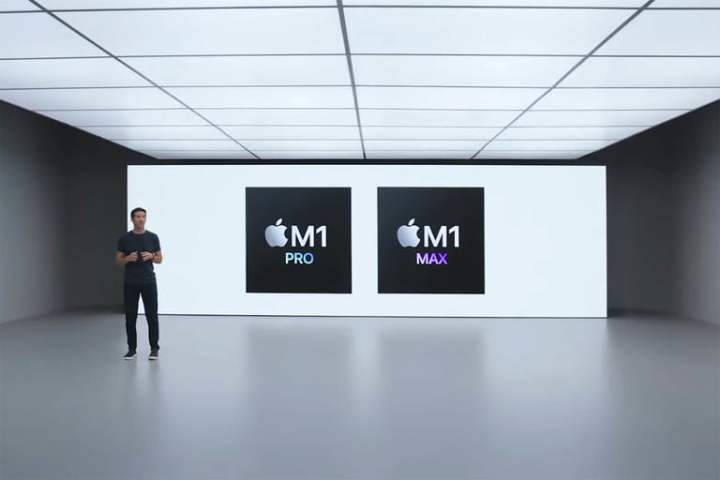
The idea of two chips powering the headset has been backed up by reporter Gurman on several occasions. Gurman has claimed one of the two chips would be “on par with the M1 Pro in the MacBook Pro.” The secondary chip — apparently called the Reality Processor — will handle the headset’s graphics. Gurman says the chip combination could make the headset rather warm, so the battery has been shifted to an external unit that fits in your pocket to help offload some of the heat.
Kuo has also claimed that the headset will boast Wi-Fi 6E rather than the Wi-Fi 6 found in the current iPhone 14 lineup. This opens up a new 6GHz band, granting you lower latency and faster data rates. Considering the demanding nature of mixed-reality content, we think this claim makes a lot of sense.
However, despite all the power the headset might be loaded up with, sources The Information has spoken to claim the device will not focus on gaming (something the sources have criticized). According to The Information’s report, gaming is “a category of software that appeals to early adopters, which was important to the success of the iPhone and has been a big priority for Meta’s VR group,” so making a headset that does not put much of a focus on gaming might seem odd. Then again, given how Apple has never really fully embraced gaming with its other devices, it’s perhaps not entirely surprising.
Hand-tracking and eye-tracking
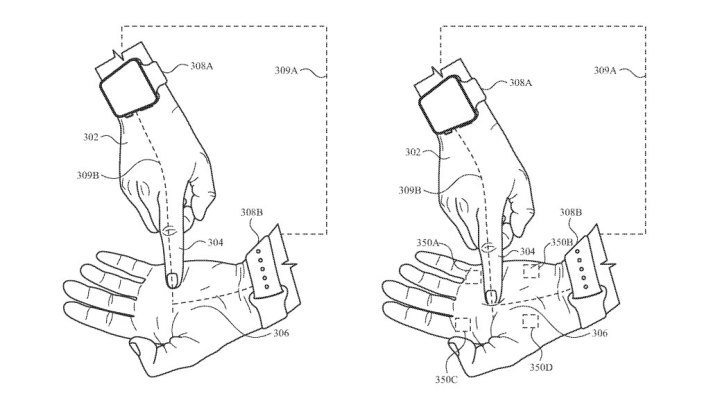
The headset’s vast camera array could allow for eye- and hand-tracking features. Apple has already patented ideas for these control methods in the past, both for the Mac and for a mixed-reality headset. Adding to that, The Information states Apple is aiming to use hand-tracking and a “clothespin-like finger clip” as input devices and is not looking to include gaming controllers with the headset. That idea has been backed up by a recent Apple patent that describes finger-mounted devices that could detect movement and provide haptic feedback. With that in mind, do not be surprised if Apple promotes the hand-tracking capabilities of its MR headset.
There’s another possibility. Apple recently uncovered a patent filed by the Cupertino giant that outlines how a pair of Apple Watches — one worn on each wrist — could be used to enable gesture controls on the headset. With two Apple Watches, a user could potentially use the palm of one hand as a trackpad of sorts and a finger on the other hand as a mouse, letting you interact with your virtual world. This being just a patent, though, there’s no guarantee Apple is doing anything other than exploring ideas here — but it’s still intriguing.
Ultimately, though, we think this system is unlikely to be the one Apple goes for, at least at first. A single Apple Watch is not a cheap purchase, and buying two could add several hundred dollars to an already-expensive headset. There’s been very little to indicate that Apple is working on controllers for its headset, so we’re expecting the first-generation model will use its onboard cameras for gesture controls with your hands.
A report from Gurman seems to contradict both ideas (the clothespin-like clip and the Apple Watches). Gurman believes the headset will not require any kind of physical device to be worn on a user’s hands. Instead, eye-tracking sensors and hand-tracking cameras will detect what you are looking at on-screen, then allow you to open an app by simply pinching your forefinger and thumb together.
What seems more certain is the presence of eye-tracking capabilities, and a report from The Information in October 2022 added further details on this. Citing two anonymous individuals who apparently used to work on the device, the report states that eye-tracking would allow users to log in to accounts and make payments, with the eye verification allowing multiple people to use the same headset. Tracking users’ vision would also let the headset reduce graphical fidelity in peripheral vision, thus saving battery life.
Reverse passthrough
 This is an example of Meta’s 2021 reverse passthrough prototype. Meta
This is an example of Meta’s 2021 reverse passthrough prototype. MetaOne of the most controversial rumors thus far is reverse passthrough. Mark Gurman claimed Apple designer Jony Ive lobbied for this feature. In a VR headset, a passthrough uses the cameras on the front of the device to show a view of your physical surroundings on the inner display. It gives the effect of looking through the headset.
Apple’s XR headset might have a reverse passthrough that captures your eyes and facial expressions using internal cameras, passing that image through to a display on the front of the device. The idea is to let people around you see your eyes. The Information said the outward-facing display would save battery life by having a low refresh rate.
The effect might be similar to wearing clear ski goggles. Meta demonstrated prototypes of this sort in 2021, but the results were somewhat creepy and disturbing. That may have been an “uncanny valley” effect where getting close to realism but not close enough is worse than keeping it simplistic.
If Apple really does include a front display for reverse passthrough, it could be a more acceptable, higher-quality version. As a privacy advocate, Apple would likely provide an option to switch the outward eye display off.
What about the operating system?
With all these advanced features reportedly in the works, Apple’s headset is going to need a powerful operating system to bring everything together. Gurman has commented it could be called “rOS,” with the “r” being short for “reality.” Since then, a number of tweets have surfaced apparently revealing the name “realityOS” in Apple’s code. Given Apple’s propensity to use full words in its OS naming schemes — think WatchOS, iPadOS, and MacOS — realityOS could be a good bet for the final name of the system.
In a tweet from early February, iOS developer Matthew Davis revealed a seemingly official Apple GitHub page that apparently accidentally revealed the name realityOS. Some of the comments in the code seem to make reference to iOS executables using realityOS libraries, which could hint at some form of interactivity between the two operating systems.
However, it seems Apple might have changed its mind about that realityOS name. According to Gurman, Apple is now calling the system “xrOS” internally. Gurman also claims Apple has patented the name using a shell corporation, which might suggest that it will use that operating system name publicly as well as internally — and that it could be gearing up for an imminent product launch. Gurman’s claim received some external verification when Apple reporter Parker Otolani found official government documentation showing that Apple had indeed trademarked the xrOS name using a shell company in New Zealand.
Interestingly, Apple also seems to have trademarked the “xrProOS” name in various nations. Some of the trademarks show the word in Apple’s SF Pro font, and all were registered by a company named “Deep Dive LLC,” which is thought to be a shell corporation owned by Apple. This is the first time the xrProOS name has been revealed, and it’s unknown whether Apple will actually use it. But since the company’s headset is rumored to be called Reality Pro, the addition of “Pro” to xrOS could be an indication that the name will see the light of day.
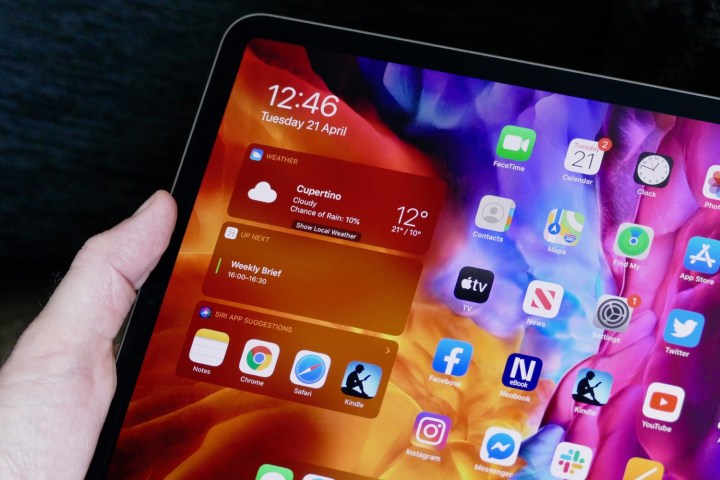 Andy Boxall/DigitalTrends
Andy Boxall/DigitalTrendsDetails on how the operating system will actually work had been scarce, until Gurman’s report in January 2023. There, the reporter outlined that xrOS would be an “ambitious attempt to create a 3D version of the iPhone’s operating system.” That means apps like Safari and Mail will exist in the Reality Pro’s three-dimensional environment. There will also be an app store and compatibility with Apple’s services, such as Apple Music and Apple TV+.
Those apps will be contained on a home screen much like that seen in iOS and iPadOS, with a grid of apps and widgets that can be reordered by the user. To input text, you’ll be able to use Siri voice commands or type using an Apple device (like an iPhone) or an external keyboard. Gurman said Apple is working on allowing you to type in midair using a virtual keyboard, but that this probably won’t be ready by the time the Reality Pro launches.
In one-on-one FaceTime calls, each caller’s face and body will be realistically rendered, according to Gurman, providing they’re both using a Reality Pro headset. In calls attended by more people, though, Memoji will be used, as the processing power required to portray everyone realistically will be too great.
Since third-party apps won’t be plentiful at launch, Apple might borrow a page from the Apple Silicon launch. The M1 Macs had the ability to run iPad apps, easing customer concerns with this vast app library. Mark Gurman says the Reality Pro will be able to run hundreds of thousands of iPad apps. Flat apps in a three-dimensional space isn’t an ideal use of augmented or virtual reality, but does provide a quick solution to the customer’s need for solutions on a brand new platform.
Finally, Gurman’s report claims you might even be able to use the headset as an external monitor for a Mac. That will let you sit at a desk and use your Mac’s keyboard and mouse, all while viewing content through the headset.
Apple mixed-reality headset: Our wish list
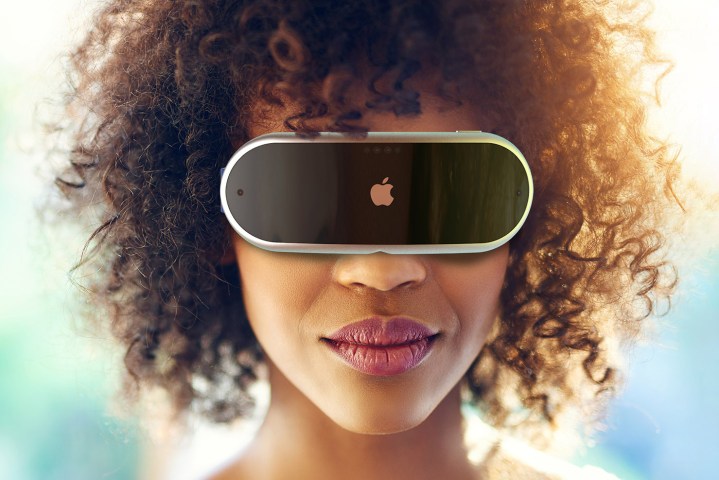 Antonio De Rosa
Antonio De RosaIt already looks like Apple is outfitting its headset with a ton of great features, but there are still a few extras we would love to see. At the top of the list is great battery life — after all, what is the point of having an excellent device to play with if it dies after a few minutes? Fortunately, the processor choice spells good news in this department, as Apple’s custom chip has led to incredible battery life in its MacBooks.
That might be countered by the super-high resolution the headset is apparently going to use. Some reports suggest Apple’s first XR headset could have just two hours of battery life, requiring frequent charging just like Meta’s Quest Pro.
The word is that Apple is developing a special operating system dubbed xrOS that will drive the headset. Apps and games will need to run on this system, but we are hoping that, due to the common Apple Silicon architecture in both the headset and Apple’s other devices, some degree of cross-compatibility will be available.
For instance, it would be great if the headset can recognize if you are playing a game on your Apple TV or your Mac, for example, and then mirror the content onto the headset with added mixed-reality goodness (provided the game is VR-compatible, of course). It would be a shame if Apple limits the headset to only work with xrOS-compatible games and apps, as developers might be put off if they must build apps from scratch for the new operating system.
One final request concerns the headset’s control method. We do not know whether the device will come with handheld controllers or will rely entirely on gestures. If it is the former, one thing Apple really needs to incorporate is haptic feedback. This is already included to great effect in every MacBook and the Apple Watch, so Apple knows how to make the tech work. Gentle taps that are built into apps and games would be a great addition that does not break immersion.
We might get to see some of these features in action, if not in the first Apple VR headset, then in the second-generation model. Kuo claimed in late 2021 that Apple was working on a second-generation VR headset that would be lighter and faster than the original model, with better battery life too. The Elec followed that up in June 2022 by saying that LG Display was hoping to supply the main OLED panels for the second-generation device, adding further evidence that Apple is already thinking ahead to its follow-up headset.

 JimMin
JimMin 





























